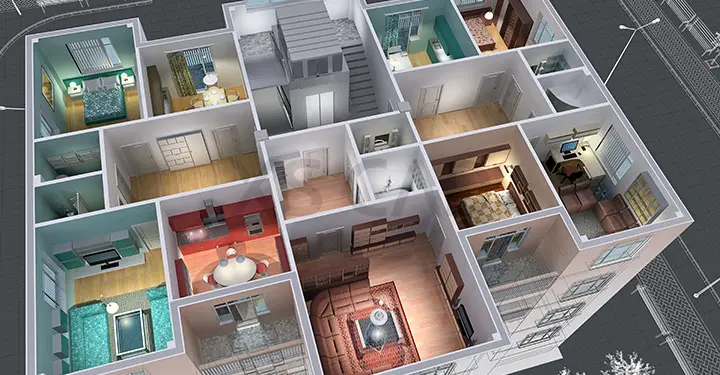Our Articles

CAD to Revit BIM Conversion Makes Large-scale/High-rise Building Workflows Easier
It may not exactly be dog eat dog, but competition is fierce in the construction industry, especially for large-scale or high-rise building projects. Efficient construction design has proven to be the very foundation for project success, and the designers, or architects, who create these designs need the right tools for their craft. Computer-aided design, or CAD, has ruled the roost for a long time and is still preferred by architects for small projects. When the big boys came to town, though, with big projects, big money and big implications, CAD alone was unable to cater to their needs.
That’s when Revit, with a holistic approach supported by Building Information Modelling (BIM), or Revit 3D BIM modelling, rode in to save the proverbial day. Large-scale and high-rise project contractors, architects, designers and engineers prefer using Revit modelling services to create effective designs. Yet, there are many people who still use CAD. Thus, large projects may need some part or parts of the design to be converted from CAD to Revit to create comprehensive models, facilitating precise construction design, drawings, calculations, cost estimations and material quantity estimations.
What’s so great about using Revit?

So, what can be converted and why would we want to do it?
Advantages of the CAD to Revit BIM Conversion
Even though CAD has been useful for architects for a long time, Revit models offer a variety of advantages under BIM services for high-rise buildings and large-scale projects with repetitive designs. Some of the reasons why CAD-based models are converted to Revit BIM are because:
Converting architectural designs from one platform to another can be tough and requires careful precision. A slight error or miscalculation can lead to expensive problems later. A reliable and process-oriented team of CAD to Revit conversion experts can be essential to the success of large-scale/high-rise building design workflows.
So, what should you look for in a sound CAD to Revit conversion process?

There’s no arguing the point. Residential Revit BIM modelling enhances building design, making the project design more accessible, the workflow faster and saving costs. A variety of BIM designers, architects, engineers and professionals use Revit architecture services and Revit 3D modelling, which helps them adhere to customer needs and government standards and codes. The Revit BIM process further results in quick turnaround times, due to easy workflows.
So, with the right Revit modelling services support from reliable and experienced partners who have proven expertise in Revit 3D BIM modelling and other Revit BIM services, the CAD to Revit BIM conversion process is smart, functional and cost-effective for large-scale and high-rise building design workflows.
XS CAD has valuable experience providing Revit modelling services and other Revit BIM services for general contractors and design consultants. Our range of services for building design firms across the world include Revit 3D BIM modelling, residential Revit BIM modelling and other Revit Architecture services. We create these models, drawings and renderings by using Revit, AutoCAD, Illustrator and BIM 360 Design for cloud collaboration.

